Introduction
This week our exercise was to complete a series of
orienteering/land navigation courses out at the UW-Eau Claire priory. The tools
we were expected to use were as follows: 5foot contour map (Figure 1), 2foot contour map (Figure 2),
compass (Figure 3), our pace count, and the UTM points given to us by our professor (Figure 4).
 |
| Figure 3: Actual Compass used in field with the parts of the compas labeled as well. use for reference when going throug the later parts of this lab writeup. Photo Credit: Hannah Bristol |
Orienteering is, for some a hobby, and others a necessary
tool in the work place. For instance, there are many clubs or groups you can
join who have the common hobby of orienteering (see www.us.orienteering.org). In
other cases though, orienteering/land navigation can be used as a training
exercise for military or based organizations. I’ve had discussions with former
military personnel who tell stories of doing the exact same thing we’re doing,
but on a much larger scale. What is important to realize from the obvious
popularity and wide array of uses for such a tool is that land navigation is a
vital tool to many people, and many professions. Land navigation is not simply
the product of a geographer’s nerd session, but a valuable and widely used
spatial tool.
For this exercise we were tasked with using only a few tools
to complete the land navigation course the two most important being our compass
and our topographic map we created last week. (See methods section for complete
walkthrough). It was interesting because with a compass alone we can’t navigate
to and from our points. Nor with a topographic map alone could we navigate to
the points. We needed a frame of reference as well as points themselves, and an
origin point (luckily we were provided these points, the origin, and a physical
compass by our professor). By combining these UTM points, our compass and our
topographic map (in UTM coordinate reference) we are able to navigate to the
given points. One tool is good, two tools is better, but having all three leads
to successful completion of the task.
What makes this exercise so valuable is that it is a
culmination of a few of our previously learned/developed skills. A few weeks
ago we perfected our compass skills and learned how to plot and map points
based on azimuth and distance, last week we learned how to create topographic
maps with a UTM reference, and this week we got to combine them. (Further
analysis in Discussion portion)
Methods
For this exercise it’s important to remember last weeks
exercise in creating our maps. These maps were not simply handed to us, we had
to take the raw data and create our own topographic maps. Should any questions
or issues arise, take note of last week’s write-up.
When we arrived at the Priory, (1190 Priory Road, Eau
Claire, WI) we went inside to have group planning before heading off into the
woods to follow our land navigation course.
Al Wiberg giving a crash course on compass navigation
highlighted this time inside. He reminded us that the first step in compass
navigation is to take note of the Magnetic declination. This is the degree to
which magnetic north and true north vary, and needs to be accounted for before
navigating using your compass. As we discovered earlier in the year, Eau
Claire’s magnetic declination is less than one degree, so it’s not something we
have to worry about when measuring with this degree of accuracy (we aren’t
measuring to fractions of degrees so any notation of declination would be
beyond our level of accuracy anyways.) However, if using different, more
accurate, tools, this magnetic declination would be a necessary adjustment.
Next he walked us through an example of navigation planning
using our map. By taking our origin point and finding our second point, he
showed us that by laying our compass on the origin, with the HEADING arrow
pointed directly at our second point we can determine the azimuth at which the
second point is, in relation to the first point. (refer to Figure 3)
With our compass edge on the origin point, and HEADING arrow
pointed directly at our next destination we can then turn the HOUSING/BEZEL until our
red red box or 'shed' and the reference lines on the bezel are parrallel with the UTM grid on the map.Then the bearing arrow (and
extension of our heading arrow) will tell us exactly what the azimuth is
towards our destination point. Step by step directions are as follows:
1.Lay compass base plate edge on origin point, so that it also lines up with destination point. (use a piece of paper to 'extend' your baseplate if needed
2.Orient heading arrow pointed directly at
destination point.
3.Rotate housing to ensure that the red box or 'shed' and the reference lines on the bezel are parrallel with the UTM grid on the map.
4.Note the azimuth reading as identified by the Heading arrow azimuth degree value.
(refer to Figure 3)
(refer to Figure 3)
After you attain your azimuth reading for the origin to the
first destination, you can then measure out the distance between these two
points. Since we measured our pace count in meters, we now know exactly how
many of our paces it takes to travel 100 meters. Using the scale and the
knowledge of our pace count it’s easy to determine exactly how far it is from
point to point. This should be noted somewhere on your map or on your list of
given points.
After you master the azimuth reading, and measuring your
distance for the first set of points, it is easy to reproduce this for any
other set of points, each time you just have a new origin and a new destination
point.
Once we completed all the measurements and recorded these on
our map it was time to take to the actual course. In the field we were able to
start at our origin and held the compass against our bodies. We then rotated
the housing on the compass to place our azimuth reading in line with our
heading arrow. Then, lining the red needle up with the red ‘shed’ we were able
to determine what direction our destination would be. We then used out pace
count to approximate the distance, and once we were at about the right distance
we panned our surroundings to search for the orienteering flag. Once finding
each flag, we were able to repeat this process, simply setting up a new
destination each time. (Figure 5)
In the field we
were able to take our recorded azimuths and distances and go from point to point,
successfully completing the course with very few hiccups. (Figures A+B)
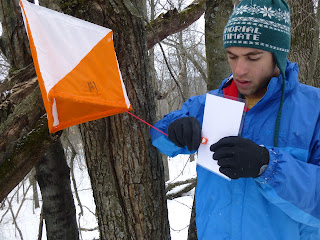 |
| Figure A. At each desitnation we had to punch our ticket to prove we made it to each spot. |
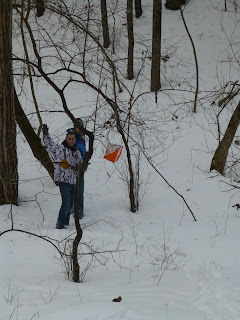 |
| Figure B: Arriving at our destination point. Then we would shoot an Azimuth and head towards our next destination point. |
Discussion/Conclusion
Our method of measuring and recording while indoors really
came to be of great help while working in the field. It ensured that we could
use our map for reference if needed, but was not a necessary tool to whip out
every single time we took a new bearing. We did however, keep the map out for
most of the time, as it provided us with a good idea of what to expect in our
next destination.
Using the 2foot and 5foot contour lines, we were able to
determine what type of terrain we would be experiencing on our traverse to the
destination point. This was helpful because it helped us stay on the right
track, and we could tell if we were headed in the complete wrong direction.
Our map also allowed us to reorient ourselves if we ever
lost our pace count, or the terrain was not lending itself to our mode of
navigation, for instance if a hill prevented us from taking a good azimuth
bearing. We were able to reorient ourselves along a road that traveled through
the priory when this happened. From the edge of the road we could reshoot our
azimuth and guesstimate our pace count again.
As far as our maps go, each of them seemed to function
pretty well for their individual purposes. The 2-foot contour aided in the
foresight process when determining the terrain surrounding our destination
points, and the 5-foot contour aided in a good reference point from which to
take our measurements from.
If I needed to change one thing about our maps, I would make
our 2foot contour map a bit less ‘noisy’ and have it focus solely on the
contour lines and a few reference points. It has a bit too much going on in it
currently.
Overall this exercise was a good combination and utilization
of many of the tools we have learned so far this semester. It was a good start
on the way to land navigation and provides a good base from which we can
experiment and learn more as we move further. The implementation of GPS next
week should prove to add another, more complex layer.

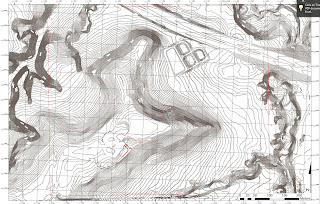
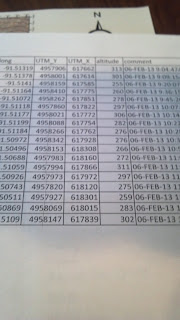
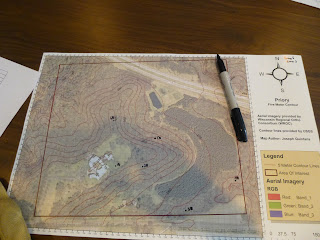
No comments:
Post a Comment